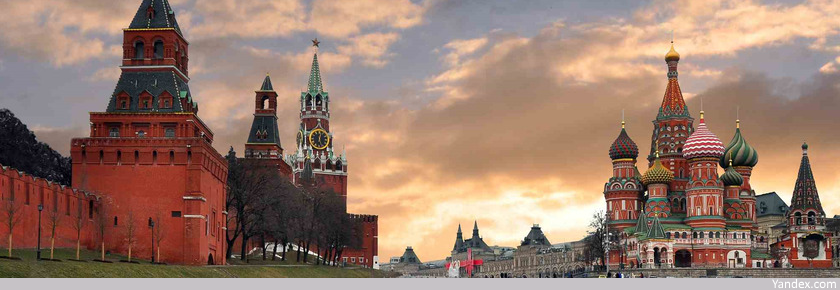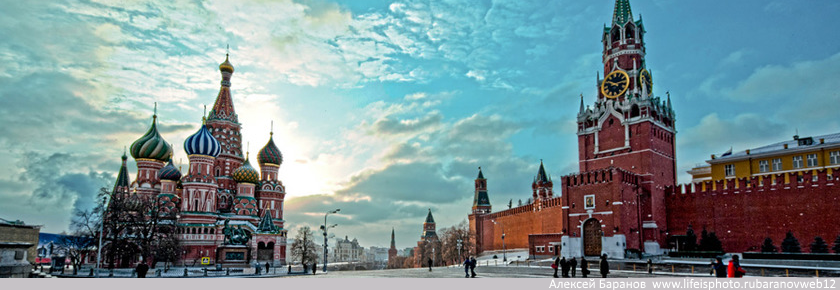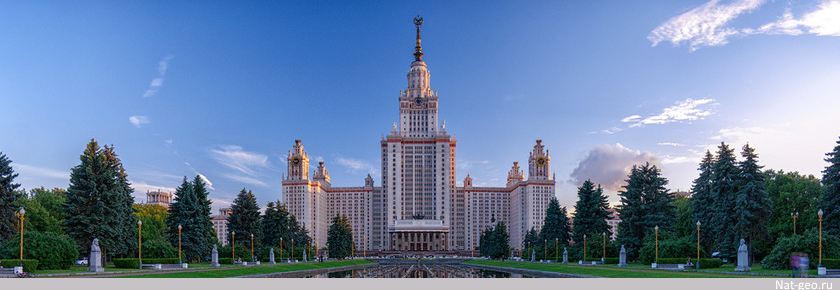About
Moscow Wireless Week is an international workshop organized by the Institute for Information Transmission Problems of the Russian Academy of Sciences (Kharkevich Institute). The workshop is dedicated to innovations and pioneering research in all aspects of wireless communications. The goal of this workshop is to bring together researchers in academia, research labs and industry from all over the world to Moscow and connect Moscow to the world.
The workshop will address important challenges in 5G and beyond Systems and exchange ideas in this fast evolving field. The conference program will include keynotes made by outstanding professors and technology leaders from all over the world. The keynotes will promote technologies, systems and infrastructure that are continuing to change the world and give all users access to an unprecedented range of high-speed, seamless and cost-effective global telecommunications services. Participants gather to exchange ideas, receive updates on the latest technologies and expand professional and social networking.
Moscow is a cultural center that has its rich history, its numerous historical monuments. It has more than 2000 objects of historical monuments, museums, churches, parks, as well as famous streets and squares. In 2018, Moscow became the center of world-class sports competitions.
The workshop is organized as a part of the Megagrant project 14.W03.31.0019 ( Decree of Russian Government #220, dated April 9, 2010).
Program
|
|
Monday |
Tuesday |
Wednesday |
|
|
|
October 1, 2018 |
October 2, 2018 |
October 3, 2018 |
|
|
|
Opening |
|
|
|
|
10:00 |
Rui Aguiar |
Werner Mohr |
Robert Schober |
|
|
5G: is the |
Network |
Wireless Powered |
||
|
10:30 |
Arturo Azcorra |
Evgeny Khorov |
Mehmet Can |
|
|
5G vertical |
ARBAT: A |
Tones from |
||
|
11:00 |
Ian Akyildiz |
Enrico Natalicio |
Ruslan Smelyansky |
|
|
Intelligent Environments to Support Communication in 5G and beyond Wireless Systems |
5G and UAVs: |
The Edge |
||
|
11:30 |
Markku Renfors |
Dmitri Shmelkin |
Giacomo Morabito |
|
|
FFT-Domain |
Combinatorial |
The long way to |
||
|
12:00 |
Lunch break |
Lunch break |
Lunch break |
|
|
|
|
|
||
|
13:30 |
Evgeny Koucheryavy |
Tommaso Melodia |
Antonio Capone |
|
|
Will blockchain facilitate services in 5G systems? |
Toward a unified framework for wireless network slicing |
New scenarios |
||
|
14:00 |
Vladimir Lyashev |
Liljana Gavrilovska |
Karen Vardanyan |
|
|
High-Precision |
REMs: enablers |
Challenges in |
||
|
14:30 |
Idelfonso Tafur |
Hrayer Hovsepyan |
Russian and |
|
|
5G PPP blueSPACE project: Enabled Vertical Applications and |
Evolving 5G: |
International Collaboration |
||
|
15:00 |
Discussion |
Discussion |
||
Speakers
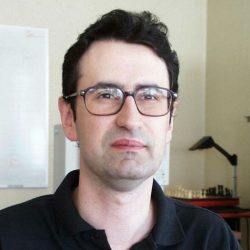
rui l. aguiar
University of Aveiro,
Portugal
5G: is the business on the radio?
Abstract.The talk with discuss the requirements and views on 5G networks, and the expectations from business actors. It will address some of the key differentiating technologies between 4G and 5G, and highlight how these technologies, specially on the control plane, can be deployed in different steps for evolving current networks into true 5G networks.
Bio.
Rui L. Aguiar received his Ph.D. degree in electrical engineering in 2001 from the University of Aveiro. He is currently a Full Professor at the University of Aveiro, responsible for the networking area, and has been previously an adjunct professor at the INI, Carnegie Mellon University and a Visiting Research Scholar at Universidade Federal de Uberlândia, Brazil. He is coordinating a research line nationwide in Instituto de Telecomunicações, on the area of Networks and Multimedia. His current research interests are centred on the implementation of advanced wireless systems, with special emphasis on 5G networks and the Future Internet. He has more than 450 published papers in those areas, including standardization contributions to IEEE and IETF. He has served as technical and general chair of several conferences, from IEEE, ACM and IFIP, and is regularly invited for keynotes on 5G and Future Internet networks. He sits on the TPC of all major IEEE ComSoc conferences. He is currently associated with the 5G PPP Infrastructure Association and is the current Chair of the steering board of the Networld2020 ETP. He is senior member of IEEE, Portugal ComSoc Chapter Chair, and a member of ACM. He is associated editor of Wiley’s ETT, and Springers’ Wireless Networks. He is a chartered engineer, has acted as a consultant to several companies, and as an expert to multiple public bodies, both on the societal and on the judiciary branches. He currently sits on the Advisory Board of several EU-projects and research units from several countries.
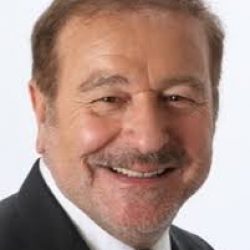
Ian F. Akyildiz
Georgia Institute of Technology,
USA
Intelligent environments to support Communication in 5G Beyond Wireless Systems
Bio.
Ian F. AKYILDIZ is the Ken Byers Chair Professor with the School of Electrical and Computer Engineering, Georgia Institute of Technology, Director of the Broadband Wireless Networking Laboratory and Chair of the Telecommunications Group. Dr. Ian F. Akyildiz is Megagrant lead researcher at the Institute for Information Transmission Problems, Kharckevich Institute, Russian Academy of Sciences in Moscow, Russia since January 2018. He is the Editor-in-Chief of Computer Networks (Elsevier) Journal since 2000 and the founding Editor-in-Chief of the Ad Hoc Networks Journal (2003) both published by Elsevier. Prof. Dr. Ian F. Akyildiz is an IEEE FELLOW (1996) and an ACM FELLOW (1997). He received numerous awards from IEEE and ACM. Due to Google scholar, his papers received over 103.5+K citations and his h-index is 113 as of July 2018. His current research interests are in Internet of xThings, 5G Wireless Systems, Software Defined Networking, Nano-Scale Communications and Wireless Sensor Networks in Challenged Environments.
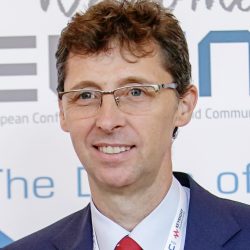
arturo azcorra
IMDEA Networks Institute and University Carlos III of Madrid, Spain
5G vertical demonstrations at 5TONIC Laboratory
Abstract. After several intense years of world research, we already have solutions for the challenging requirements that were set for 5G networks. The 5TONIC laboratory is the leading EU center in 5G results, and is already trialing 5G services with top vertical customers. We will present the trials that we are carrying out, and the preliminary results out of them.
Bio. Arturo Azcorra received his M.Sc. degree in Telecommunications Engineering from the Universidad Politécnica de Madrid (UPM) in 1986 and his PhD from the same university in 1989. In 1993, he obtained an MBA with honors from Instituto de Empresa. He is the founder and Director of the international research institute IMDEA Networks, with a double affiliation as Full Professor at University Carlos III of Madrid (UC3M). He is an IEEE Senior Member and an ACM SIGCOMM Member. He has been visiting researcher at MIT and UC Berkeley, among other research institutions. Since 2015 to date he is the Chairman of the Expert Advisory Board of "Networld 2020" European Technology Platform and a member of the Partnership Board of the European 5G PPP. Since 2016 to date he is the Vicepresident of the 5TONIC Laboratory for the development of 5G Technologies. He has participated in and/or directed 53 research and technological development projects, from the first EU Framework Programme to the current H2020. Prof. Azcorra has coordinated the EU projects 5G-TRANSFORMER, 5G-CROSSHAUL, TRILOGY-2 and CARMEN, and the CONTENT, E-NEXT and E-NET European Networks of Excellence. He has served as a Program Committee Member in many international conferences, including several editions of IEEE PROMS, IDMS, QofIS, ACM CoNEXT and IEEE INFOCOM. He is the founder of the ACM CoNEXT conference series and was the general chair of its first edition. He has published over 140 scientific papers in books, international magazines and conferences. In addition to his scientific achievements, Dr. Azcorra has a relevant track record of research management. He was deputy Vicerrector of Academic Infrastructures at U. Carlos III from 2000 to 2007. He served as Director General for Technology Transfer and Corporate Development at the Spanish Ministry of Science and Innovation from 2009 to 2010, and then appointed Director General of CDTI (Spanish agency for industrial research from 2010 to 2012.
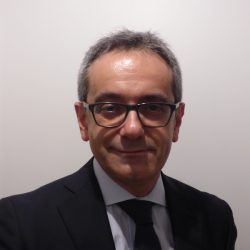
antonio capone
Politecnico di Milano,
Italy
New scenarios for resource slicing and sharing in beyond 5G networks
Abstract.
The introduction of 5G is radically changing the mobile network architecture with new instruments for virtualizing most of the basic network functions, facilitating the programmability of application specific functions both at network core and edge, and partitioning the radio access and transport resources so as to optimize the support of a large set of vertical application scenarios. This evolution has required a big research effort to tackle non-trivial technological problems. However, the new scenario is stimulating quite big changes in the economic relations and in the roles of mobile market players, that require new flexible solutions for the allocation of infrastructure and transmission resources to competing operators. The system evolution beyond 5G is then expected to provide new solutions that enable the coexistence of multiple and autonomous decision entities often pursuing conflicting objectives.
This talk will make a link between the technical instruments for network slicing and virtualization on one side and the models for analysing the competition between market players for acquiring the resources for running their applications and serve their customers. It will also make the case for a new approach to infrastructure sharing for mobile networks based on the idea that network resources, both at the wireless access and the core network, can be traded dynamically on a real-time market where virtual operators or tenants compete to obtain the resources to serve their users.
Bio. Antonio Capone is Full Professor at Politecnico di Milano (POLIMI), where he is deputy Dean of the School of Industrial and Information Engineering, coordinator of the Master program in Telecommunication Engineering, and director of the ANTLab. His expertise is on networking and his main research activities include radio resource management in wireless networks, traffic management in software defined networks, network planning and optimization. On these topics he has published more than 250 peer-reviewed. He serves in the TPC of major conferences in networking, he is editor of IEEE Trans. on Mobile Computing, and Computer Communications, and he was editor of ACM/IEEE Trans. on Networking and Computer Networks. He is senior member of the IEEE.
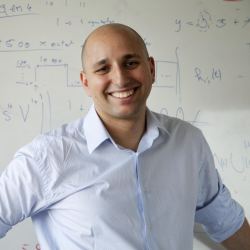
Mérouane Debbah
Director, Mathematical and Algorithmic Sciences Lab, Huawei,
France
Wireless AI: the next big thing?
Abstract. Mobile cellular networks are becoming increasingly complex to manage while classical deployment/optimization techniques are cost-ineffective and thus seen as stopgaps. This is all the more difficult considering the extreme constraints of 5G networks in terms of data rate (more than 10 Gb/s), massive connectivity (more than 1000000 devices per km2), latency (under 1ms) and energy efficiency (a reduction by a factor of 100 with respect to 4G network). Unfortunately, the development of adequate solutions is severely limited by the scarcity of the actual ressources (energy, bandwidth and space). Recently, the community has turned to a new resource known as Artificial Intelligence at all layers of the network to exploit the increasing computing power afforded by the improvement in Moore's law in combination with the availability of huge data in 5G networks. This is an important paradigm shift which considers the increasing data flood/huge number of nodes as an opportunity rather than a curse. In this talk, we will discuss through various examples how the recent advances in big data algorithms can provide an efficient framework for the design of Intelligent Networks.
Bio. Merouane Debbah entered the Ecole Normale Superieure Paris-Saclay (France) in 1996 where he received his M.Sc and Ph.D. degrees respectively. He worked for Motorola Labs (Saclay, France) from 1999-2002 and the Vienna Research Center for Telecommunications (Vienna, Austria) until 2003. From 2003 to 2007, he joined the Mobile Communications department of the Institut Eurecom (Sophia Antipolis, France) as an Assistant Professor. Since 2007, he is a Full Professor at CentraleSupelec (Gif-sur-Yvette, France). From 2007 to 2014, he was the director of the Alcatel-Lucent Chair on Flexible Radio. Since 2014, he is Vice-President of the Huawei France R&D center and director of the Mathematical and Algorithmic Sciences Lab. His research interests lie in fundamental mathematics, algorithms, statistics, information & communication sciences research. He is an Associate Editor in Chief of the journal Random Matrix: Theory and Applications and was an associate and senior area editor for IEEE Transactions on Signal Processing respectively in 2011-2013 and 2013-2014. Merouane Debbah is a recipient of the ERC grant MORE (Advanced Mathematical Tools for Complex Network Engineering). He is a IEEE Fellow, a WWRF Fellow and a member of the academic senate of Paris-Saclay. He has managed 8 EU projects and more than 24 national and international projects. He received 17 best paper awards, among which the 2007 IEEE GLOBECOM best paper award, the Wi-Opt 2009 best paper award, the 2010 Newcom++ best paper award, the WUN CogCom Best Paper 2012 and 2013 Award, the 2014 WCNC best paper award, the 2015 ICC best paper award, the 2015 IEEE Communications Society Leonard G. Abraham Prize, the 2015 IEEE Communications Society Fred W. Ellersick Prize, the 2016 IEEE Communications Society Best Tutorial paper award, the 2016 European Wireless Best Paper Award and the 2017 Eurasip Best Paper Award as well as the Valuetools 2007, Valuetools 2008, CrownCom2009, Valuetools 2012 and SAM 2014 best student paper awards. He is the recipient of the Mario Boella award in 2005, the IEEE Glavieux Prize Award in 2011 and the Qualcomm Innovation Prize Award in 2012.
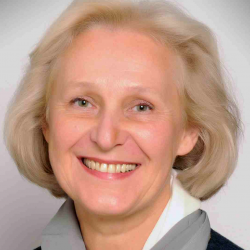
liljana gavrilovska
Ss. Cyril and Methodius University (UKIM),
Macedonia
REMs: enablers for radio environmental consciousness towards future wireless networks
Abstract. Radio Environmental Maps (REMs) provide real-time radio environmental consciousness concerning plethora of relevant parameters that can be used to optimize and design/redesign functional regimes of different wireless networks. Nowadays, REMs rely on numerous complex mechanisms and techniques (sensing, radio interference fields, localization, channel and propagation modeling, etc.) and can collect relevant data from different electrical devices (that can range from specialized spectrum sensing devices up to any radio device). REMs can be utilized in many wireless scenarios, and represent promising facilitating techniques envisioned for the future wireless networks towards 5G and beyond.
Bio. Dr. Liljana Gavrilovska currently holds the position of full professor at the Faculty of Electrical Engineering and Information Technologies, Ss Cyril and Methodius University in Skopje. She is Head of the Center for Wireless and Mobile Communications (CWMC) and of the WINGroup, working in the area of telecommunication networks and wireless and mobile communications. Prof. Gavrilovska participated in numerous EU funded projects such as ASAP, PACWOMAN, MAGNET, MAGNET Beyond, ARAGORN, ProSense, FARAMIR, QUASAR and ACROPOLIS, eWall, NATO funded projects such as RIWCoS, ORCA and FALCON, and, several domestic research and applicative projects, mostly as a leader of the national team. Her major research interest is concentrated on cognitive radio networks, future mobile systems, virtualization and cloud RANs, wireless and personal area networks, cross-layer optimizations, broadband wireless access technologies, ad hoc networking, traffic analysis and heterogeneous wireless networks.
Dr. Gavrilovska is author/co-author of more than 200 research journal and conference publications and technical papers and several books and books’ chapters. For her work she was recognized as one of the best scientist at her university (2013) and awarded with the highest national award for scientific contribution “Goce Delcev” (2014). She is a senior member of IEEE.
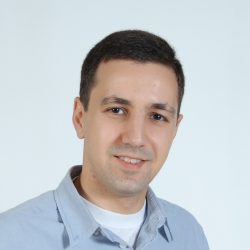
Hrayr Hovsepyan
National Instruments ,
Armenia
Evolving 5G: Promise meets reality
Abstract. As the wireless communication systems evolve, they become more complex and comprehensive. Because of that the vertical prototyping become more relevant and important. During the presentation, the current challenges of the 5G wireless prototyping will be discussed.
Bio. Hrayr is a Systems Engineer, with over 5 years of work experience at National Instruments and with PhD degree in Wireless Communications. Before joining NI, Hrayr started his career at the largest mobile operator company in Armenia as a technician and then as a staff Engineer for over 6 years.
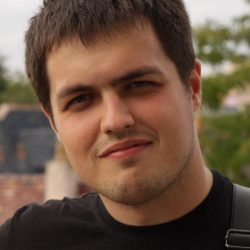
Evgeny khorov
Institute for Information Transmission Problems (IITP RAS),
Russia
ARBAT: A Flexible 5G Architecture for efficient QoE Provisioning
Bio: Evgeny Khorov is the Head of Wireless Networks Lab at the Institute for Information Transmission Problems, Russian Academy of Sciences. His main research interests are related to 5G and beyond wireless systems, next generation Wi-Fi, protocol design and cross-layer optimization. Evgeny has led dozens of national and international projects sponsored by academia funds and industry. He has authored over 70 papers. For breakthrough results of the joint project, in 2015 and 2017 Huawei RRC awarded him as the Best Cooperation Project Leader. Being a voting member of IEEE 802.11, Evgeny Khorov has contributed to 802.11ax standard with many proposals. Evgeny Khorov received Moscow Prize for young scientists in 2013 and Russian Government Award in Science and Technology for Young Scientists. He also received Best Paper Award from IEEE ISWCS 2012 and Best Cited Review Paper Award from Elsevier Computer Communications in 2018. Evgeny Khorov gives keynotes & tutorials and participates in panels at large conferences (incl. IEEE Globecom 2017, IEEE PIMRC 2017, IEEE ICC 2016, ISWCS 2014, NEW2AN 2018, etc.). In 2015 he was a Visiting Research Fellow in King's College London. He chairs TPC of the IEEE Globecom 2018 CA5GS Workshop, IEEE BlackSeaCom 2019, etc. Also he serves as an editor for Ad Hoc Networks
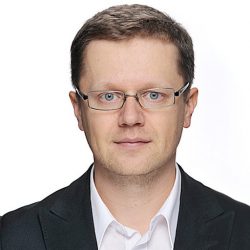
Evgeny Kucheryavy
Tampere University of Technology,
Finland
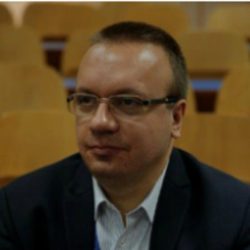
vladimir lyashev
Huawei Technologies,
Russia
High-Precision vs. Estimation Errors in Wireless Communication Systems
Abstract. This talk belongs to practical problems of massive-MIMO systems, which appear due to growth of spatial precision in wireless communication. But there are a lot of limitation to keep minimal error in parameter measurements to satisfy of the requirements for such precision systems. In the talk we try to identify sources of the error, system robustness to these errors, and ways to minimize their impact.
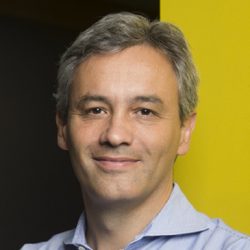
tommaso melodia
Northeastern University,
USA
Toward a unified framework for wireless network slicing
Abstract. The notions of softwarization and virtualization of the radio access
network (RAN) of next-generation (5G) wireless systems are ushering in
a vision where applications and services are physically decoupled from
devices and network infrastructure. This crucial aspect will
ultimately enable the dynamic deployment of heterogeneous services by
different network operators over the same physical infrastructure. In
this talk, we discuss a mathematical framework to formalize the RAN
slicing and the RAN slicing enforcement problem and demonstrate their
NP-hardness, as well as design and evaluate experimentally
approximation algorithms that render the solution scalable as the
problems increases in size.
Bio. Tommaso Melodia is the William Lincoln Smith Professor with the Department of
Electrical and Computer Engineering and College of Engineering Faculty
Fellow at Northeastern University in
Boston. He received his
Ph.D. in Electrical and Computer Engineering
from the Georgia Institute of Technology in 2007. He is an IEEE
Fellow, a recipient of
the National Science Foundation CAREER award and of the 2018
Søren Buus Outstanding Research Award.
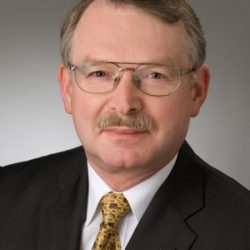
WERNER MOHR
Nokia Networks,
Germany
Network architecture vision for 5G and beyond
Abstract. ICT in general and networks (mobile and fixed) in particular is a fundamental enabler of a modern society. The Smart Networks of the future will be the nervous system of the Next Generation Internet and other commercial networks and are the platform for driving the digital transformation. Future communication systems and networks (Smart Networks) are the foundation of the Human Centric Internet. They provide the energy-efficient and high-performance infrastructure on which NGI (Next Generation Internet) and other digital services can be developed and deployed. Smart Networks will apply intelligent software (Artificial Intelligence) for decentralised and automated network management, data analytics and shared contexts and knowledge. Such infrastructures are the enabler for the future data economy. By virtualisation and strict policies, they will foster a free and fair flow of data which can be shared whilst at the same time protecting the integrity and privacy of data which is confidential or private: Users should be able to control their environment in the Internet and not be controlled by the Internet.
Bio. Werner Mohr was graduated from the University of Hannover, Germany, with the Master Degree in electrical engineering in 1981 and with the Ph.D. degree in 1987. Dr. Werner Mohr joined Siemens AG, Mobile Network Division in Munich, Germany in 1991. He was involved in several EU funded projects and ETSI standardization groups on UMTS and systems beyond 3G. Werner Mohr coordinated several EU and Eureka Celtic funded projects on 3G (FRAMES project), LTE and IMT-Advanced radio interface (WINNER I, II and WINNER+ projects), which developed the basic concepts for future radio standards. Since April 2007 he is with Nokia Solutions and Networks (now Nokia) in Munich Germany, where he is Head of Research Alliances. In addition, he was chairperson of the NetWorld2020 European Technology Platform until December 2016. Werner Mohr was Chair of the Board of the 5G Infrastructure Association in 5G PPP of the EU Commission from its launch until December 2016. He was chair of the "Wireless World Research Forum – WWRF" from its launch in August 2001 up to December 2003. He was member of the board of ITG in VDE from 2006 to 2014. He is co-author of a book on "Third Generation Mobile Communication Systems" a book on "Radio Technologies and Concepts for IMT-Advanced" and a book “Mobile and Wireless Communications for IMT-Advanced and Beyond”. In December 2016 Werner Mohr received the IEEE Communications Society Award for Public Service in the Field of Telecommunications.
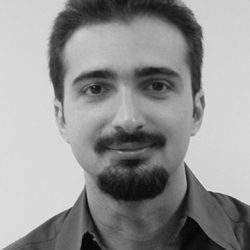
Giacomo morabito
University of Catania,
Italy
The long way to the Internet of Things: Overcoming the Internet of Platforms impasse
Abstract.
In its original definition the Internet of Things (IoT) promised to be
“A world wide network of interconnected objects uniquely addressable interacting with each others through standard communication protocols”.
The vision behind such definition was a mesh network of smart objects able to communicate with each others as required by applications and services, independently of their locations, and access technologies.
The above promise has not been respected so far.
In fact, if we look at the current IoT deployments we observe that objects interact with a server (often in the cloud) and applications sit on such server or exploit the APIs it makes available.
In other terms, we can distinguish a multitude of platforms consisting of smart things each connected to its server and using its own semantic and communication protocols.
While this was a necessary workaround key technical and non technical issues, it is clear today that this is a major limitation to the takeoff of the IoT original vision as well.
In this talk we will analyze the motivations behind such impasse, we will discuss its consequences, and present possible solutions.
Bio.
Giacomo Morabito received the laurea degree cum laude in Electronic Engineering and the Ph.D in Electronic, Computer and Communication Engineering from the University of Catania (Italy) in 1996 and 2000, respectively.
Since 1999 to 2001 he was a research engineer at the Broadband and Wireless Networking Laboratory of the Georgia Institute of Technology (Atlanta, GA, USA).
Since 2001 he is with the Department of Electric, Electronic, and Computer Engineering of the University of Catania where he is currently full professor of telecommunications.
Giacomo Morabito has served or is serving in the Editorial Board of Elsevier Computer Networks, IEEE Wireless Communications, Wireless Networks, and IEEE Networking Letters.
He has been the General Chair of ACM NanoCom and has been one of the founders and steering committee member of the ACM ICN conference.
He has been involved in several national and European research projects and is currently coordinating the H2020 project COG-LO.
His research interests focus on analysis and design of wireless networks.
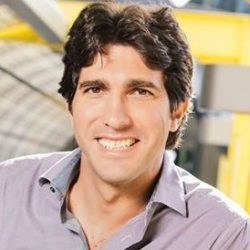
enrico natalizio
University of Technology of Compiegne,
France
5G and UAVs: synergies to exploit for an Internet of Intelligent Things
Abstract. Cellular-connected UAVs and UAV-assisted 5G communications are the two main research and development directions individuated for UAVs usage in 5G. Cellular-connected UAVs, supported by recent standardization efforts for Long Term Evolution (LTE) systems, considers the UAVs as aerial users of the mobile network, whereas UAV-assisted 5G communications involves the usage of UAVs as a part of the infrastructure to improve the performance of the cellular system. However, the 5G communication paradigm proposes a new way of defining services, based on network functions virtualization and network slicing. Through these mechanisms, 5G consortia envisage the integration of million devices, towards a Massive Internet of Things. As UAVs are more powerful devices than classic IoT devices, in terms of self-organization, computation, storage, communication, reasoning, learning and moving capabilities, they could integrate with classic IoT devices into a cyberphysical system that provides the end-users with advanced services that exploit these capabilities. We argue that this integration is facilitated by leveraging 5G innovations, such as functions virtualization. In this talk, we first survey the two existing research and development directions, and then we propose to make a step forward in the integration of UAVs into larger IoT systems.
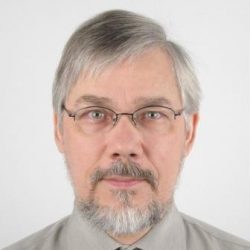
Markku renfors
Tampere University of Technology,
Finland
FFT-Domain Signal Processing for Transparent Spectrum Enhancement in 5G New Radio
Abstract. Several alternative waveform processing techniques for CP-OFDM have been studied and proposed for the 5G NR physical layer, to support a flexible multiservice network with mixed numerology and asynchronous uplink services. We show that different techniques can be flexibly mixed, allowing to separately optimize complexity-performance tradeoffs for transmitter and receiver implementations in the base stations and user devices. The discussed approach and solutions simplify standardization, improve transparent transmitter and receiver coexistence, and allow future-proof evolution path for performance improvements in 5G NR physical layer hardware and algorithm design. Moreover, we investigate the application of fast-convolution (FC) filtering schemes for flexible and effective waveform generation and processing. FC-approach supports designing optimized multiplexing of filtered groups of CP-OFDM physical resource blocks (PRBs) in a spectrally well-localized manner, i.e., with narrow guardbands, while effectively controlling the in-band interference and out-of-band emissions.
Bio.
Markku Renfors received the Dr.Tech. degree from the Tampere University of Technology (TUT), Tampere, Finland, in 1982. Since 1992, he has been a Professor with the Department of Electronics and Communications Engineering at TUT, where he was the Head from 1992 to 2010. His research interests include enhanced communication waveforms and signal processing algorithms for flexible communications receivers and transmitters. Prof. Renfors is a Fellow of IEEE and a co-recipient of the Guillemin Cauer Award from the IEEE Circuits and Systems Society in 1987.
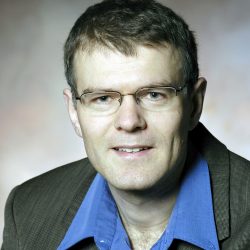
robert schober
Friedrich-Alexander University Erlangen-Nürnberg
Germany
Wireless Powered Communication as an Enabling Technology for the Internet of Things: Overview, Recent Results, and Challenges
Abstract.Although wireless power transfer (WPT) has been first proposed by Nikola Tesla more than one hundred years ago, the application of this concept as a means to facilitate perpetual energy supply for wireless communication systems has emerged only recently. In fact, WPT and simultaneous wireless information and power transfer (SWIPT) are now seen by many as promising enabling technologies for large-scale sensor networks and the Internet of Things. In this talk, we will first discuss the benefits, limitations, and possible applications of WPT/SWIPT systems. In the main part of the talk, we will investigate the implications of WPT/SWIPT on the design and optimization of wireless communication systems with special emphasis on the impact of the adopted energy harvesting model. In the last part of the talk, we will elaborate on the challenges that have to be overcome to make WPT/SWIPT practical and suggest some topics for future research.
Bio.
Robert Schober was a Professor and Canada Research Chair at the University of British Columbia (UBC), Vancouver, Canada, from 2002 to 2011. Since January 2012 he is an Alexander von Humboldt Professor and the Chair for Digital Communication at Friedrich-Alexander University Erlangen-Nuremberg (FAU), Germany. His research interests fall into the broad areas of Communication Theory, Wireless Communications, and Statistical Signal Processing. Robert received several awards for his work including the 2007 Wilhelm Friedrich Bessel Research Award of the Alexander von Humboldt Foundation, the 2008 Charles McDowell Award for Excellence in Research from UBC, a 2011 Alexander von Humboldt Professorship, a 2012 NSERC E.W.R. Stacie Fellowship, and the 2017 Wireless Communication Technical Committee Recognition Award. In addition, he has received several best paper awards for his research and is listed as a 2017 Highly Cited Researcher by the Web of Science. Robert is a Fellow of the Canadian Academy of Engineering,a Fellow of the Engineering Institute of Canada, and a Fellow of the IEEE. From 2012 to 2015, he served as Editor-in-Chief of the IEEE Transactions on Communications. Currently, he is the Chair of the Steering Committee of the IEEE Transactions on Molecular, Biological and Multiscale Communication and serves on the Editorial Board of the Proceedings of the IEEE. Furthermore, he is a Member at Large of the Board of Governors and a Distinguished Lecturer of the IEEE Communications Society.
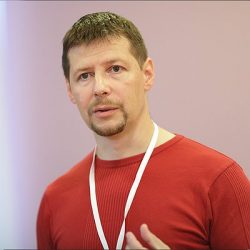
Dmitry Shmelkin
Huawei Technologies,
Russia
Combinatorial problems of 5G RRM
Abstract. Downlink and uplink Radio Resource Management is famous as a source of deep mathematical problems and challenges. The forthcoming 5G networks need to cope with an unprecedented complexity due to massive MIMO technology. The problem of 5G optimal resource allocation is NP-complete and reasonable approximations are absolutely necessary to deal with it. The talk will introduce combinatorial problems arising in downlink and uplink 5G scheduling and rank selection.
Bio.
Dr Dmitri Shmelkin is Math Modeling Team Lead at Moscow Research Center of Huawei. The team addresses core algorithmic problems of different types of Networks, from Wireless to Optics. Before joining Huawei in 2011, Dmitri had been working since 2001 for Mentor Graphics Co. (now a Siemens business) developing the core routing and placement algorithms in EDA. Dmitri obtained both Master and PhD in pure Math from Lomonosov Moscow State University, in 1991 and 1995, respectively.
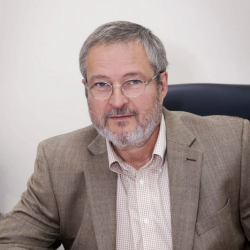
ruslan smelyansky
Lomonosov Moscow State University,
Russia
The Edge Computing Hierarchy
Abstract. The computing paradigm based on the giant like DC is replaced by a new paradigm called
the Edge Computing Hierarchy (ECH). The urgency of this shift is caused by the requirements of
new applications that actively use video, real-time interactivity, new mobile communication
technologies, which today can not be implemented without the usage of cloud computing and
virtualization based on SDN&NFV technologies. The presentation considers the requirements
dictated by these applications, outlines the ECH architecture. Attention is focused on the fact that
all these applications are distributed and require guaranteed quality of service in the networking
operation. The main scientific problems that need to be solved for implementing this new paradigm
are discussed.
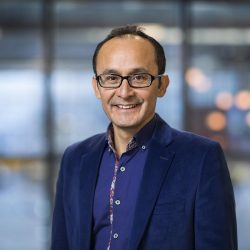
idelfonso tafur monroy
Eindhoven University of Technology,
Netherlands
5G PPP blueSPACE project: Enabled Vertical Applications and Testing Facilities for End-to-End Validations
Download slides...
Abstract.The key-performance indicators (KPIs) that will be delivered by 5G networks such as extremely low-latency, high capacity, robustness and highly flexible network are key enablers for applications such as autonomous driving, cooperative robotics, transport and processing of large volumes of video and images, among others. This talk presents an overview of the user cases activities in the 5G PPP blueSPACE project, and ongoing efforts to build up an open environment for validation of end-to-end applications benefitting from the 5G KPIs in the Eindhoven based 5G-Brainport testbed.
Bio.
Idelfonso Tafur Monroy is since July 2017, Professor in photonic Terahertz systems at the department of Electrical Engineering of the Eindhoven University of Technology, and director of Photonic Integration Systems activities of the Photonic Integration Technology Center (PITC). He coordinates two H2020 projects: 5G PPP BLUESPACE on multicore fiber technologies for 5G wireless systems and ITN CELTA project with 15 PhD students working convergence of electronics and photonics technologies for applications. His research interests are in photonics technologies for Terahertz systems, converged electronic-photonic integrated circuits for applications in communications, sensing and computing. He is co-author of over 500 journal and conference papers and has graduated 22 PhD students. He is co-founder of the start-up Bifrost Communications on optical fiber access solutions. Idelfonso started his academic career in the Kharkov Polytechnic Institute in Ukraine, he received a M.Sc degree from the Bonch-Bruevitch Institute of Communications, St. Petersburg, Russia, holds a Technology Licentiate degree in telecommunications theory from the Royal Institute of Technology, Stockholm, Sweden, and a PhD degree from the Eindhoven University of Technology. He has been Professor in photonics communication technologies at Technical University of Denmark, guest Professor at the Beijing University of Post and Telecommunications, visiting scientist at the University of California at Berkeley and Fellowship Professor at the ITMO University in St Petersburg Russia, and is a senior member of IEEE.
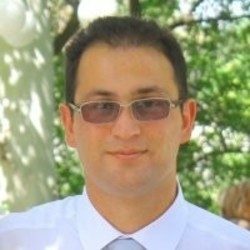
Karen Vardanyan
National Instrument,
Armenia
Challenges in Massive MIMO Technology Implementation
Abstract.
Although the technology of big Active Phased Arrayed Antennas is well known starting from end of 20-th century, in communications systems this technology is not used.
Currently a lot of developers working to increase power efficiency of telecommunication systems, so the usage of Phased Antenna Arrays and Active Phased Antenna Arrays became more significant. For mentioned reason, we developed Massive MIMO Prototyping System to help researchers test their ideas on real-time communication system.
During my talk, I will share solutions that out team used to be able build Massive MIMO System.
Bio.
Karen Vardanyan received his Master’s degree in communication system design in 2009 and starting from 2011 working at National Instrument as Systems Engineer. He is mainly specialized in Wireless Communications Systems design and support, such as Massive MIMO, LTE, 802.11, etc.
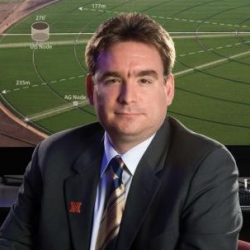
mehmet can vuran
University of Nebraska-Lincoln,
USA
Tones from Underground: Internet of Underground Things for Agriculture, Urban Infrastructure, and Highways
Abstract.The recent developments in low-power wireless communications, distributed sensing, and
networking allow sensing components to be deployed in places where no computer has
gone before. In this talk, recent developments in wireless communication in confined
environments will be discussed within the context of Internet of Underground Things (IOUT).
I-OUTs are an emerging type of networks, where sensors are buried in the ground
and communicate through soil, with applications in precision agriculture, mining, public
infrastructure monitoring, and transportation. Soil properties (e.g., permittivity, particle
size, density, moisture, soil-air interface) and their dynamics have significant impacts on
wireless communication (e.g., antenna impedance, attenuation, coherence bandwidth,
connectivity). Therefore, unique challenges exist for the development of communication
and networking solutions in this media. Our recent developments in underground antenna
design and soil-moisture-adaptive beamforming will be presented, with an overview of
underground communication challenges. Moreover, results from a six-year field study of
I-OUTs for precision agriculture in a 40-acre maize/soybean rotation field will be presented.
The talk will briefly summarize applications of IoUTs in public infrastructure monitoring
and roadside infrastructure.
Bio.
Mehmet Can (Jon) Vuran received his B.Sc. degree in Electrical and Electronics
Engineering from Bilkent University, Ankara, Turkey in 2002. He received his M.S. and
Ph.D. degrees in Electrical and Computer Engineering from Georgia Institute of
Technology in 2004 and 2007, respectively.
Currently, he is the Susan J. Rosowski Associate Professor of Computer Science and
Engineering at the University of Nebraska-Lincoln. Dr. Vuran received an NSF CAREER
award in 2010 for “Bringing Wireless Sensor Networks Underground”. In 2014, 2015, and
2016, he was named a highly-cited researcher in computer science by Thomson
Reuters/Clarivate Analytics. He is the co-author of Wireless Sensor Networks textbook
and an editor in Computer Networks Journal, IEEE Transactions on Wireless
Communications, and IEEE Communications Surveys and Tutorials Journal. His current
research interests include Internet of Things, underground communications, dynamic
spectrum access networks, and cyber-physical networks.
Registration
Participation in Moscow Wireless Week is free, but requires preliminary registration. We kindly ask you to register before 2 PM, September 27.
To register, please use this link:
Registration gives access to all the talks, slides and other materials if any. There will be complimentary tee and coffee during the whole event. Registration does not include lunch and social events.
All participants can have lunch in the canteen of the Russian Academy of Sciences, which is located in the same building.
To book tickets for social events, please contact Ekaterina Guzha (katringuzha@gmail.com).
Venue

Moscow Wireless Week will be held in The Golden Brains, the headquarters of the Russian Academy of Sciences.
Address: Moscow, Leninsky avenue., 32A. Entrance 1 (at the center).
Please prepare your Photo ID (passport) when entering the building.
The wardrobe is located at -1 floor.
Registration & main area: Green Hall, 3rd floor.
Organizers
Program Chairs
– Ian F. Akyildiz
– Evgeny Khorov
– Andrey Lyakhov
– Andrey Sobolevsky
Arrangement Chair
– Ekaterina Guzha (katringuzha@gmail.com)

